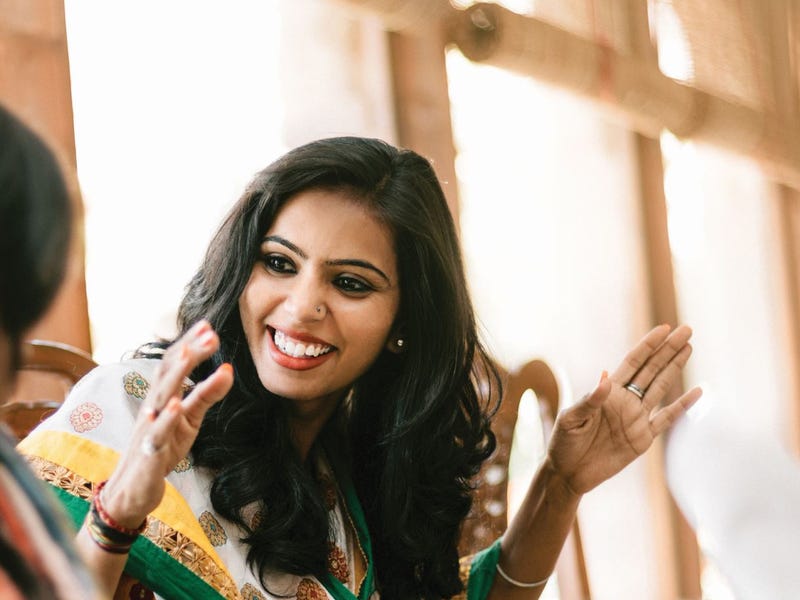6. Modern Standard Arabic (310 million speakers)
- First language speakers: 310 million
- Total speakers: 310 million
Did you know that Modern Standard Arabic (MSA) is the only language on this list without native speakers? Indeed, Arabic is a large language with many different dialects, and all Arabic speakers grow up speaking a local dialect, like Egyptian Arabic, Levantine Arabic, Mesopotamian Arabic, or another local variety.
So, how does MSA have so many non-native speakers? That’s because MSA is commonly used in newspapers, TV broadcasts, and movies, but people don’t speak it with each other. It’s an academic language that you’ll find in literature and politics, but not in everyday life. As such, if you’re interested in learning Arabic, you’re better off starting with one dialect and then learning MSA to widen your horizons.
7. Portuguese (279 million speakers)

- First language speakers: 276 million
- Second language speakers: 3 million
- Total speakers: 279 million
Portuguese is another language that expanded worldwide during the European colonial period. In fact, only 5% of Portuguese speakers actually live in Portugal! Today, Portuguese is the official language of nine countries in Europe, South America, Africa, and Asia. Brazil is the largest country out of those nine and has the most Portuguese speakers. Brazil’s large population makes Portuguese the most widely spoken language in the Southern Hemisphere.
The language is known for its rich vowel system, including nasal vowels, which contribute to its distinct, rhythmic sound. Portuguese pronunciation varies significantly between European and Brazilian variants, with the latter generally considered more melodic. Although both variants are mutually intelligible, these differences in pronunciation make it difficult for Brazilians and Portuguese to understand each other.
8. Bengali (265 million speakers)
- First language speakers: 233 million
- Second language speakers: 32 million
- Total speakers: 265 million
Bengali is the official language of Bangladesh and is also spoken in some areas of India and Burma. It belongs to the Indo-Aryan branch of the Indo-European language family, same as Hindi. It uses its own script, derived from the ancient Brahmi script, which is written from left to right.
One of Bengali’s distinctive features is its rich vowel system, with 7 vowels that can be nasalized, creating a total of 14 vowel sounds. This helps it contribute to the language’s musical quality, which contributes greatly to its poetry and song. Nobel laureates like Rabindranath Tagore have helped promote Bengali art and literature around the world.
9. Russian (258.2 million speakers)
- First language speakers: 154 million
- Second language speakers: 104.1 million
- Total speakers: 258.2 million
Finding Russian among the most widely spoken languages globally shouldn’t be a surprise, considering that Russia is the largest country in the world by territory. Plus, while Russian is the official language of only four countries, it’s widely spoken in 19 countries. In fact, did you know that it’s also the language with the highest number of native speakers in all of Europe?
This East Slavic language uses the Cyrillic alphabet, which can be intimidating for learners who are used to the Latin script. However, many letters are similar to their Latin counterparts, so you won’t have to learn many new symbols. What you should be concerned with, though, is its complex grammar system, which includes six cases, three genders, and aspects in verbs. However, this complexity also gives it a unique and beautiful nuance, which is why some of history’s literary giants, like Tolstoy and Dostoevsky, come from Russia.
10. Urdu (232 million speakers)
- First language speakers: 71 million
- Second language speakers: 161 million
- Total speakers: 232 million
Urdu is one of the two official languages in Pakistan and is also widely used in certain regions of India. The spoken part of Urdu is widely intelligible with Hindi, as both speakers can understand each other without much issue. However, Urdu uses a modified Persian script for its alphabet, while Hindi uses Sanskrit.
Urdu is also famous for its phonetic qualities, which make it a beautiful language for poetry and literature. It can be described as an elegant language, particularly thanks to its formality. Despite political tensions, Urdu continues to serve as a bridge between India and Pakistan, particularly through film, music, and literature.
11. Indonesian (200 million speakers)
- First language speakers: 44 million
- Second language speakers: 156 million
- Total speakers: 200 million
Bahasa Indonesian is the official language of Indonesia, the fourth most populous country in the world. Peculiarly, it’s not the native language of most of its speakers. Rather, it’s a second language necessary for mutual understanding in a country with more than 200 languages.
Indonesian is also a standardized form of Malay, making the two languages mutually intelligible. It uses the Latin alphabet and is known for its simple grammar structures, lacking conjugations, grammatical gender, and plural forms. Indonesian also absorbed many loanwords from Sanskrit, Arabic, Dutch, English, and various local languages, reflecting Indonesia’s history and diversity.
12. German (134 million speakers)

- First language speakers: 75 million
- Second language speakers: 59 million
- Total speakers: 134 million
German is, of course, the official language of Germany. Unlike other European counterparts, it’s mostly spoken within Europe, with only Austria, Liechtenstein, Switzerland, and Luxembourg having sizeable German-speaking populations. That said, learning German is incredibly popular relative to its small population, ranking as the fifth most studied language in the world.
German belongs to the West Germanic branch of the Indo-European language family. It’s known for its compound words, which can combine several words into one, like Kreuzschlitzschraubenzieher (Screwdriver). Despite its reputation for complexity, German follows logical rules and patterns, making it systematic to learn once you’ve understood the basic principles. This makes it a popular language in science, philosophy, and technology.
13. Japanese (125.4 million speakers)
- First language speakers: 125.3 million
- Second language speakers: 0.1 million
- Total speakers: 125.4 million
Japanese is the first language on this list that is entirely spoken within one country. In fact, over 99% of Japanese people speak Japanese as their native language! With that said, learning Japanese is extremely popular among people who want to enjoy Japanese culture and do business with the third-largest economy in the world.
One of Japanese’s most distinctive features is its three writing systems: kanji, hiragana, and katakana. Kanji involves characters that were borrowed from Classical Chinese, which is why you might recognize some signs in Japan if you can read Chinese. Hiragana is a phonetic script used to write native Japanese words and grammatical elements. Katakana is another phonetic script primarily used to write foreign loanwords.
14. Nigerian Pidgin (121 million speakers)
- First language speakers: 5 million
- Second language speakers: 116 million
- Total speakers: 121 million
Nigeria is one of the fastest-growing countries in terms of population. Indeed, it is estimated that the West African country will be the fourth-largest country in the world in terms of population by 2050 — just a hair behind the U.S. We can expect the Nigerian Pidgin to climb on this list in the coming decades following Nigeria’s population boom.
Also known as Naija, Nigerian Pidgin is an English-based creole language that evolved from a mix of English and local Nigerian languages like Yoruba and Igbo. It’s known for its expressiveness and ability to convey complex ideas in concise forms. It often uses idioms and local metaphors that reflect Nigerian culture and experiences.
15. Egyptian Arabic (119 million speakers)
- First language speakers: 84 million
- Second language speakers: 35 million
- Total speakers: 119 million
Egyptian Arabic is the most widely understood Arabic dialect, spoken by over 100 million people in Egypt and beyond. It’s one of the most prominent dialects of Arabic thanks to Egypt’s large population and cultural influence through cinema, television, and music. While related to MSA, Egyptian Arabic has developed its own distinct characteristics over time. For example, it has a simpler grammar structure that incorporates loanwords from languages like Turkish, Italian, and French. Pronunciation also varies, with Egyptians often substituting the “j” sound for a “g” sound. For example, “jameel” (beautiful) becomes “gameel” in Egyptian Arabic.
The dialect is also known for its abundant use of colorful idioms. For example, "فى المشمش" (fil mishmish), which literally means “in the apricot season” but is used to express impossibility, similar to the English phrase “when pigs fly.” Another interesting fact about Egyptian Arabic is the common use of word repetition for emphasis, as in "كتير كتير" (kteer kteer) to mean “a great deal” or “very much.”
16. Marathi (99 million speakers)

- First language speakers: 83 million
- Second language speakers: 16 million
- Total speakers: 99 million
Marathi is the third most common language in India, with most of its speakers concentrated in the state of Maharashtra. This Indo-Aryan language has existed in its current form for about 1,300 years, making it one of the oldest languages in the world! It uses the Devanagari script, just like Hinidi.
Marathi is known for having three genders and a complex case system. It’s also known for having seriously long words that’ll make your tongue do linguistic gymnastics. Try saying "अभिजिंक्यपणामुळे" (abhijinkyapanāmuḷe), which means “because of the quality of being undefeatable.” Talk about a mouthful!
17. Vietnamese (97 million speakers)
- First language speakers: 86 million
- Second language speakers: 11 million
- Total speakers: 97 million
The Vietnamese language has six tones and is, of course, predominantly spoken in Vietnam. However, did you know that it is also recognized as an official language in the Czech Republic, and can therefore be used in courts and official radio and television broadcasts?
It used to rely on the Chinese script for writing, but it replaced it with the Latin alphabet in the 20th century. However, it spiced things up by adding a bunch of diacritical marks, turning the familiar letters into squiggly variations. It’s also an incredibly efficient language, as most words are just one syllable long.
18. Telugu (95.7 million speakers)
- First language speakers: 82.7 million
- Second language speakers: 13 million
- Total speakers: 96 million
Telugu is the fourth most common language in India, right behind Marathi. Telugu is predominantly spoken in the Indian states of Andhra Pradesh and Telangana, although it’s also the official language of several other states. It is a part of the Dravidian language family, which has been around for about 5,000 years. It’s known as the “Italian of the East” thanks to its melodious sound, with every word ending in a vowel.
An interesting fact about Telugu is that it has a unique letter called “anusvara” (ం) that can represent any nasal sound. It changes its pronunciation based on the following consonant, making it a linguistic chameleon of sorts! As you can probably tell from this letter, the Telugu script is known for its circular letter, which is based on the Brahmi script.
19. Turkish (91 million speakers)
- First language speakers: 85 million
- Second language speakers: 6 million
- Total speakers: 91 million
Turkish is the official language of — you guessed it — Turkey. What you may not know is that Turkish used to be written in a modified version of the Arabic alphabet until 1928, when the Roman alphabet replaced it. There are sizeable Turkish-speaking populations in Cyprus, Germany, Austria, Bulgaria, Greece and other European states.
Turkish is an agglutinative language, meaning you can stack suffixes onto words like Lego blocks. This can create super long words like “Çekoslovakyalılaştıramadıklarımızdanmışsınızcasına” which means “As if you were one of those people whom we could not make into a Czechoslovakian.” Doesn’t make a lot of sense, but definitely makes it onto the list of the longest words!
20. Western Punjabi (90 million speakers)
- First language speakers: N/A
- Second language speakers: 90 million
- Total speakers: 90 million
Western Punjabi, also known as Lahnda, is a major Indo-Aryan language spoken primarily in Pakistan, particularly in the Punjab province. It encompasses several dialects, including Majhi, Pothohari, and Multani, and is the native tongue for tens of millions of people in cities like Lahore, Rawalpindi, and Multan. As of 2025, it is spoken by around 90 million people, making it one of the most widely spoken languages in the world. Western Punjabi is typically written in the Shahmukhi script, a variant of the Persian alphabet, and belongs to the Indo-European language family. Although it is closely related to Eastern Punjabi, spoken mainly in India, the two differ in pronunciation, script, and vocabulary. Despite its large number of speakers, Western Punjabi is often underrepresented in official statistics, as Urdu is the national language of Pakistan and dominates formal communication.
21. Swahili (87 million speakers)
- First language speakers: 4 million
- Second language speakers: 83 million
- Total speakers: 87 million
Tamil is the fifth most common language in India, with a sizeable presence in the state of Tamil Nadu. It’s also commonly spoken in Sri Lanka and Singapore by Tamil people. Tamil is considered the oldest living language in the world, with a history spanning more than 5,000 years!
It also has a pretty unique writing system. It has 12 vowels, 18 consonants, and a whopping 216 combined letters. Each Tamil character represents a syllable rather than a single sound, making it a syllabic rather than an alphabetic script. A fun fact about Tamil is that it uses the “honorific plural,” which means using plural forms to refer to a single person as a sign of respect. It’s like saying “you guys” to your boss, but it’s actually polite!
22. Tagalog (87 million speakers)
- First language speakers: 33 million
- Second language speakers: 54 million
- Total speakers: 87 million
Tagalog is an Austronesian language primarily spoken in the Philippines, serving as the basis for Filipino, the country’s national language. Tagalog is known for its complex verbal system and its significant borrowing from other languages due to historical influences. One of the most interesting features of Tagalog is its verb-initial word order, where the verb typically comes at the beginning of the sentence.
Tagalog also has a unique system of focus, where different verbal affixes highlight different elements of the sentence as the topic. Another fun fact about Tagalog is that it has absorbed from Spanish, English, and Chinese, reflecting the Philippines’ rich history. This can make it seem like Tagalog speakers are speaking multiple languages all in one sentence!
23. Tamil (86 million speakers)
- First language speakers: 79 million
- Second language speakers: 7 million
- Total speakers: 86 million
Tamil is a classical Dravidian language spoken predominantly in the southern Indian state of Tamil Nadu, as well as in Sri Lanka, Singapore, and among diaspora communities worldwide. It has over 85 million speakers as of 2025, with a strong presence both as a native and second language. Tamil is one of the oldest living languages in the world, with a rich literary tradition that dates back over two millennia. It is officially recognized in India, Sri Lanka, and Singapore, and is written in its own unique script. Despite modernization, Tamil maintains a deep cultural and emotional significance among its speakers, and continues to thrive in education, media, and everyday life.
24. Yue Chinese - incl. Cantonese (86 million speakers)

- First language speakers: 85 million
- Second language speakers: 1 million
- Total speakers: 86 million
Yue Chinese is a group of closely related Chinese dialects. The most popular of these dialects is Cantonese, which is spoken predominantly in the Guangdong province of mainland China, as well as in Hong Kong and Macau. Cantonese is also popular among overseas communities, making it one of the most common dialects of Chinese outside of China.
A noteworthy fact about Cantonese is that it’s a tonal language on steroids. While Mandarin has 4 tones, Cantonese boasts 9 tones (or six, depending on who you ask). It’s also famous for its slang and expressive swear words. It’s got insults that are so creative that they’re almost poetic! For example, 仆街 (Pok gai), which literally means “fall in the street,” but is used like “go to hell.” Harsh, but kinda funny!
25. Wu Chinese - incl. Shanghainese (83 million speakers)
- First language speakers: 82.5 million
- Second language speakers: .5 million
- Total speakers: 83 million
Wu Chinese is a group of closely related varieties of Chinese spoken primarily in the eastern coastal area of China, including Shanghai, southern Jiangsu province, and most of Zhejiang province. Shanghainese is part of Wu Chinese, which is the native language of most Shanghai locals.
One of the most distinctive characteristics of Wu Chinese is its rich and complex tone system, with most Wu dialects featuring seven or eight tones, compared to the four tones of Standard Mandarin. Wu Chinese also retains the three-way distinction of obstruents (stops and affricates) found in Middle Chinese, categorized as voiced, voiceless, and voiceless aspirated. It also includes many words that are unique to the Wu-speaking regions and not found in other Chinese varieties, making this a very unique Chinese dialect.
26. Korean (82 million speakers)
First language speakers: 81 million
Second language speakers: 1 million
Total speakers: 82 million
Korean, the official language of both South Korea and North Korea, is spoken by about 82 million people in the peninsula. It’s often described as a language isolate, meaning it’s not definitively related to any other known language family. However, Korean used to rely on the Classical Chinese writing system until the invention of the Hangul script in the 15th century, and as many as 50% of Korean words come from Chinese.
Its writing system, hangul, was created in the 15th century by King Sejong the Great. This alphabet is praised for its scientific design and ease of learning, with characters representing the shape of the mouth when pronouncing each sound. Korean grammar is notably different from English, with a subject-object-verb (SOV) word order and an extensive system of honorifics that reflect the language’s emphasis on social hierarchy and respect.
There you have it! That’s the list of the 25 most spoken languages in the world plus an extra 26th!. Are you inspired to open your world with language skills and culture? Discover all the languages Berlitz has to offer here.
Expand your knowledge of languages
Learn with Berlitz








